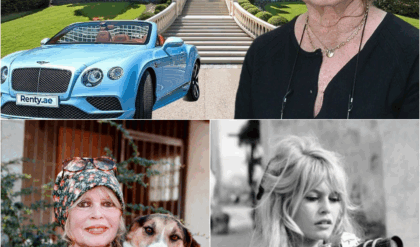

Weighing in at almost 70 tonnes, the Tiger II, also known as the Royal Tiger, was the heaviest armoured vehicle ever mass-produced by the German army, which built 489 of them during the Second World War. Intended to replace the Tiger I, its design was launched in May 1941 and the first units were delivered in early 1944. Its impressive mass was due to thick sloping armour, particularly at the front, with 18.5cm on the turret and 15cm on the body.
A powerful tank with limited mobility
The Tiger II was a heavy tank designed to break through a well-defended front and dominate the battlefield. Its firepower set it apart from other armoured vehicles of the time. It is powered by a 700bhp HL 230 P30 V12 petrol engine designed by Maybach, the same engine that powered the Panther and Tiger I tanks. However, while this engine was sufficient for the Panther and Tiger I models, it was not for the Tiger II, whose heavy weight would affect both its mobility and, above all, its reliability.
Its range, too often misinterpreted, turns out to be reasonable for a 70-tonne tank. It consumes 505 litres per 100 km on the road. Its 860-litre fuel tank gives it 170km on the road and 110 to 120km off-road, or 60 to 80 litres per hour, whereas a modest 32-tonne Sherman M4 can gobble up 120 litres per hour and consume 450 litres per 100km.
Weighing in at almost 70 tonnes, the Tiger II, also known as the Royal Tiger, was the heaviest armoured vehicle ever mass-produced by the German army, which built 489 of them during the Second World War. Intended to replace the Tiger I, its design was launched in May 1941 and the first units were delivered in early 1944. Its impressive mass was due to thick sloping armour, particularly at the front, with 18.5cm on the turret and 15cm on the body.
A powerful tank with limited mobility
The Tiger II was a heavy tank designed to break through a well-defended front and dominate the battlefield. Its firepower set it apart from other armoured vehicles of the time. It is powered by a 700bhp HL 230 P30 V12 petrol engine designed by Maybach, the same engine that powered the Panther and Tiger I tanks. However, while this engine was sufficient for the Panther and Tiger I models, it was not for the Tiger II, whose heavy weight would affect both its mobility and, above all, its reliability.
You may like
This Wedding In California Took An Unexpected Turn Fast
More…
139
35
46

Do You Know What Crohn’s Disease Looks Like In Women? Take A Look
More…
348
87
116

Farmer’s Startling Discovery
More…
354
89
118
Its range, too often misinterpreted, turns out to be reasonable for a 70-tonne tank. It consumes 505 litres per 100 km on the road. Its 860-litre fuel tank gives it 170km on the road and 110 to 120km off-road, or 60 to 80 litres per hour, whereas a modest 32-tonne Sherman M4 can gobble up 120 litres per hour and consume 450 litres per 100km.
On the other hand, it was clear that the HL230P30 engine was not powerful enough, and despite its high torque of 1850n/m, the 70 tonnes were too much to bear, especially on heavy terrain. The Germans gave it the nickname “Die Schnecke” (The Slug), as the Tiger II could hardly travel at more than 15km/h over heavy terrain.
Offensive and protected, the Tiger II is a formidable armoured vehicle
The Tiger II is armed with a formidable gun, the 8.8 cm KwK 43 L/71, 6.30 m long and capable of hitting its target from several kilometres away. This cannon strikes terror into Allied troops because it is capable of piercing any armoured vehicle less than 4500m away.
The fighting in Normandy: the fierce battle of Tiger II
During the Battle of Normandy, twelve Tiger IIs belonging to the 1.s.pz.Abt.503 of the Heer were plunged into the fighting on the Caen plain in July 1944. They will travel 190 km by road from the Dreux unloading station to the Emieville zone to the east of Caen.
This heavy tank, with its impressive armour and formidable firepower, found itself in trouble during Operation Goodwood on 18 July 1944. After surviving the most powerful aerial bombardment known in Western Europe (8,000 tonnes of bombs over 15km2), the surviving Tiger IIs went on to face more than 1,000 Allied tanks.
Four Tiger IIs were lost on 18 July 1944; the eight surviving Tiger IIs were moved 55 km by road to fight in Normandy Switzerland, on Mont Pinçon; and two other Tiger IIs were destroyed.
In mid-August, the order to withdraw was given, and the surviving Tiger IIs moved in slow agony, left to their own devices until they reached the Falaise pocket, where they were all destroyed. None of them made it to the Seine.
At Mailly le Camp, 3.s.pz.Abt.503, which was destroyed on 18.07.1944 at Emieville, was reconstituted with fourteen new Tiger IIs between 26 July 1944 and 12 August 1944.
A new mission began: after being unloaded, the Tigers had to cross Paris (20 August 1944) and then reach the American bridgehead at Mantes la Jolie.
Of the fourteen Tiger IIs, only nine arrived in Vexin Normand, where terrible fighting still awaited them. They faced 50,000 American soldiers, 500 Allied armoured vehicles, 2 million landmines and just as many artillery shells.
On 28 August 1944, Hauptmann Walter Scherf’s Tiger II 300 (which visitors to the Normandy Victory Museum were able to see in action during the week of 6 June 2024) broke down at Oinville en Vexin. Company Chief Warrant Officer Klaus Neeb received 18 shells in his Tiger II 301 before abandoning it.
The surviving Tiger IIs of 3.s.pz.Abt.503 tried to reach Belgium by road, but Rambow’s last Tiger II 324 ran out of fuel just outside Amiens.
Weighing in at almost 70 tonnes, the Tiger II, also known as the Royal Tiger, was the heaviest armoured vehicle ever mass-produced by the German army, which built 489 of them during the Second World War. Intended to replace the Tiger I, its design was launched in May 1941 and the first units were delivered in early 1944. Its impressive mass was due to thick sloping armour, particularly at the front, with 18.5cm on the turret and 15cm on the body.
A powerful tank with limited mobility
The Tiger II was a heavy tank designed to break through a well-defended front and dominate the battlefield. Its firepower set it apart from other armoured vehicles of the time. It is powered by a 700bhp HL 230 P30 V12 petrol engine designed by Maybach, the same engine that powered the Panther and Tiger I tanks. However, while this engine was sufficient for the Panther and Tiger I models, it was not for the Tiger II, whose heavy weight would affect both its mobility and, above all, its reliability.
You may like
This Wedding In California Took An Unexpected Turn Fast
More…
139
35
46

Do You Know What Crohn’s Disease Looks Like In Women? Take A Look
More…
348
87
116

Farmer’s Startling Discovery
More…
354
89
118
Its range, too often misinterpreted, turns out to be reasonable for a 70-tonne tank. It consumes 505 litres per 100 km on the road. Its 860-litre fuel tank gives it 170km on the road and 110 to 120km off-road, or 60 to 80 litres per hour, whereas a modest 32-tonne Sherman M4 can gobble up 120 litres per hour and consume 450 litres per 100km.
On the other hand, it was clear that the HL230P30 engine was not powerful enough, and despite its high torque of 1850n/m, the 70 tonnes were too much to bear, especially on heavy terrain. The Germans gave it the nickname “Die Schnecke” (The Slug), as the Tiger II could hardly travel at more than 15km/h over heavy terrain.
Offensive and protected, the Tiger II is a formidable armoured vehicle
The Tiger II is armed with a formidable gun, the 8.8 cm KwK 43 L/71, 6.30 m long and capable of hitting its target from several kilometres away. This cannon strikes terror into Allied troops because it is capable of piercing any armoured vehicle less than 4500m away.
The fighting in Normandy: the fierce battle of Tiger II
During the Battle of Normandy, twelve Tiger IIs belonging to the 1.s.pz.Abt.503 of the Heer were plunged into the fighting on the Caen plain in July 1944. They will travel 190 km by road from the Dreux unloading station to the Emieville zone to the east of Caen.
This heavy tank, with its impressive armour and formidable firepower, found itself in trouble during Operation Goodwood on 18 July 1944. After surviving the most powerful aerial bombardment known in Western Europe (8,000 tonnes of bombs over 15km2), the surviving Tiger IIs went on to face more than 1,000 Allied tanks.
Promoted Content

Los Angeles: New 2 Bed Senior Apartments For $250/Month (Peek Inside)
More…
420
105
140
Cruise Ship Encounters Pirates – Watch What The Captain Does Next
More…
774
194
258

Dangerous Signs That You Have TNBC (Take A Look!)
More…
837
209
279
Four Tiger IIs were lost on 18 July 1944; the eight surviving Tiger IIs were moved 55 km by road to fight in Normandy Switzerland, on Mont Pinçon; and two other Tiger IIs were destroyed.
In mid-August, the order to withdraw was given, and the surviving Tiger IIs moved in slow agony, left to their own devices until they reached the Falaise pocket, where they were all destroyed. None of them made it to the Seine.
At Mailly le Camp, 3.s.pz.Abt.503, which was destroyed on 18.07.1944 at Emieville, was reconstituted with fourteen new Tiger IIs between 26 July 1944 and 12 August 1944.
A new mission began: after being unloaded, the Tigers had to cross Paris (20 August 1944) and then reach the American bridgehead at Mantes la Jolie.
Of the fourteen Tiger IIs, only nine arrived in Vexin Normand, where terrible fighting still awaited them. They faced 50,000 American soldiers, 500 Allied armoured vehicles, 2 million landmines and just as many artillery shells.
Promoted Content

Los Angeles: New 2 Bed Senior Apartments For $250/Month (Peek Inside)
More…
534
134
178
This Wedding In California Took A Cheeky Turn Fast
More…
83
21
28

Laser Fat Removal In Los Angeles: Shocking Prices Revealed (Check Now)
More…
700
175
233
On 28 August 1944, Hauptmann Walter Scherf’s Tiger II 300 (which visitors to the Normandy Victory Museum were able to see in action during the week of 6 June 2024) broke down at Oinville en Vexin. Company Chief Warrant Officer Klaus Neeb received 18 shells in his Tiger II 301 before abandoning it.
The surviving Tiger IIs of 3.s.pz.Abt.503 tried to reach Belgium by road, but Rambow’s last Tiger II 324 ran out of fuel just outside Amiens.

Myths and reality
An easy-to-drive armoured vehicle
Surprisingly, despite weighing 70 tonnes, the Tiger II is disconcertingly easy to fly. Unlike the American Sherman, it is driven by a Henschel L 801 hydraulic-assisted steering wheel with double differential, which enables the Tiger II to turn 360° more quickly and to have two types of radius of curvature (one large and one small), as on the Tiger I.
Its pre-selector gearbox, produced by Maybach Olvar, is an EG 40 12 16 B type with 12 gears (8 forward and 4 reverse), allowing the driver to move up and down the gears without clutching. This modern technology makes it easy to drive for a driver trained in its use.
The truth about turrets
Many myths live on in the world of tanks, and the Tiger II is no exception. Indeed, it’s common to hear it referred to as a “Porsche” or “Henschel” turret. As it happens, these designations are incorrect. In fact, the Henschel and Porsche companies were competing for the armoured vehicle chassis during the design phase. However, both turrets were designed by Krupp.
The confusion may have arisen from the fact that the first 50 turrets were to be fitted to Porsche’s tank, which had got a little carried away with its chances of victory. But it was Henschel who won the contract, and this first type of turret was fitted to its chassis. A second type of turret, better protected and simpler to produce, would equip the majority of Tigers II. Krupp called it the “production turret”, and it is the turret on the tank on display at the Musée des blindés in Saumur.
Zimmerit: a unique form of protection
A recurring question among armour enthusiasts concerns the special texture of German tanks, which were coated with Zimmerit from December 1943. This special coating, applied in the form of striations, was intended to prevent the magnetic mines used only by the German infantry from sticking, for fear that this technology would be copied by the Allies.
Although the Zimmerit was not anti-magnetic, it created a barrier that prevented explosives from sticking directly to the steel of the tank, causing them to fall instead of exploding. This innovation represented a significant advance in armour protection.

Restoration of the Tiger II by the Musée des blindés de Saumur
The tank presented at the 80th anniversary of D-Day by the Armoured Museum is a post-war assembly of two Tiger IIs, combining the turret and mechanical parts of Tiger II No. 300 and the chassis of Tiger II No. 123. This assembly was used to carry out a series of tests for the French army.
The Tiger II arrived in Saumur in February 1975, and it was not until 1983, when the armoured museum was opened to the public, that visitors were able to see it. At the time, it wore a two-tone camouflage and the No. 233 by which it is known to this day.
When the Tiger II 233 became the Tiger II 300
After several years of research and to celebrate the 80th anniversary of the Normandy landings, the armoured museum had prepared a nice surprise for us with a brand new camouflage and number. For example, Tiger II no. 233 now bears Hauptmann Scherf’s number 300 and wears the exact camouflage it wore during the Normandy battles mentioned earlier in this article.

Technical specifications of the Tiger II
Technical designation: PzKpfw VI Königstiger – SdKfz 182
Overview
Length: 10.28 m
Width: 3.65 m
Height: 3.09 m
Weight: 69,800 kg
Crew: 5 (tank commander, pilot, co-pilot/gunner, loader, gunner)
Motorisation
Engine: Maybach HL 230 P30, 12-cylinder V-twin, petrol, 700 hp
Maximum speed: 38 km/h
Fuel consumption: 380 to 505 litres per 100 km on the road and 650 to 800 litres per 100 km in extreme terrain
Fuel tank: 860 litres (petrol)
Range: 170 km on road – 110/120 km off-road
Armour
Front armour: 150 mm (body), 185 mm (turret)
Side armour: 80 mm
Armament
Main armament: 8.8 cm KwK 43 L/71 cannon
Secondary armament: two MG 34 T 7.92 mm machine guns
Conclusion
The visit of the Tiger II to the Normandy Victory Museum was a real popular success. Many visitors came to admire this powerful tank and other models brought by the Musée des Blindés de Saumur, a long-standing partner of our museum, and we would like to thank them again for this wonderful collaboration.
Thanks also to Max Stein for proofreading the article. He is the author of a captivating book that we recommend to enthusiasts, which tells the story of the Tigre I 114: “Le tigre de Saumur, la résurrection du fauve” (bilingual French/English). You can find it in our shops (at the museum and online).





